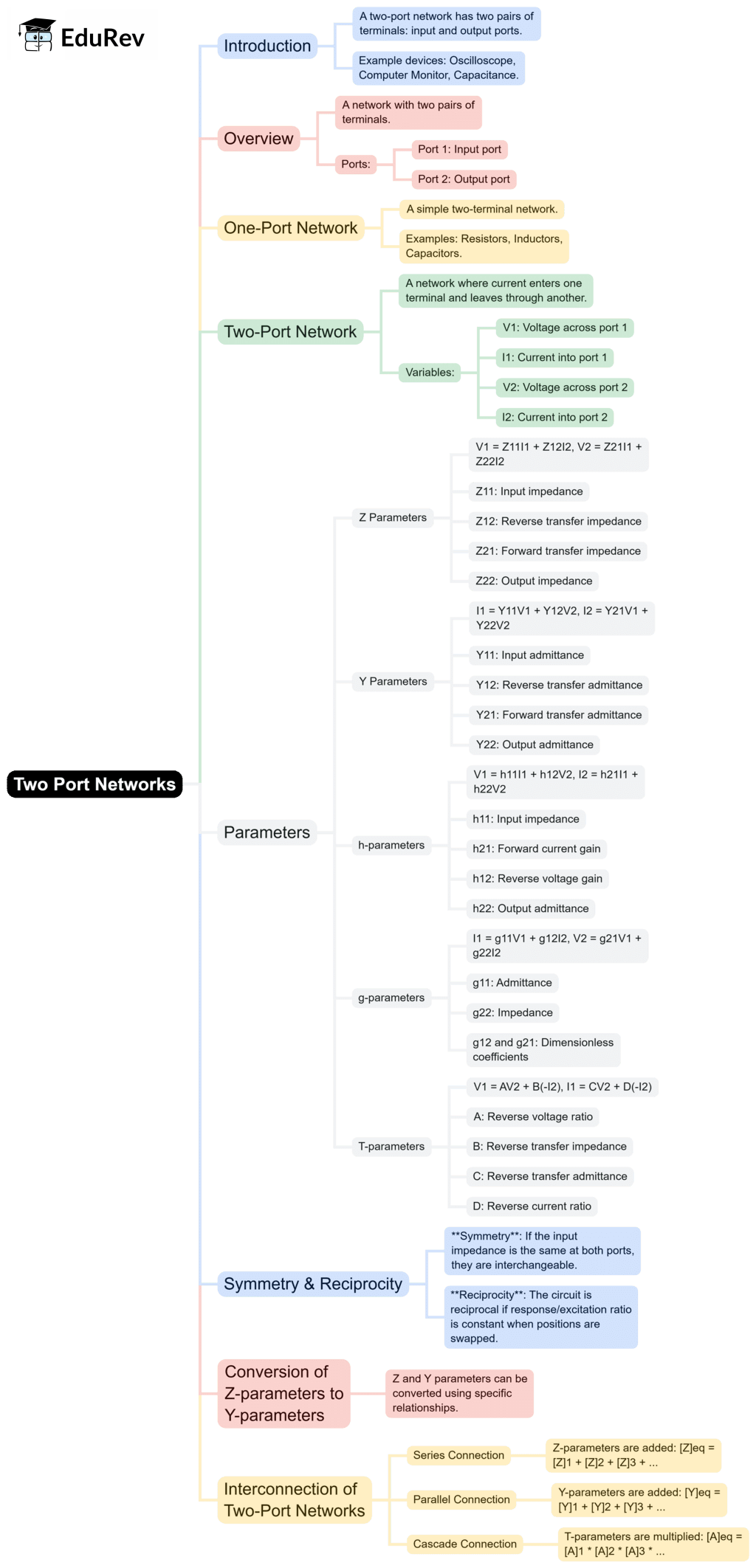Electrical Engineering (EE) Exam > Electrical Engineering (EE) Notes > Network Theory (Electric Circuits) > Mind Map: Two Port Networks
Mind Map: Two Port Networks | Network Theory (Electric Circuits) - Electrical Engineering (EE) PDF Download

The document Mind Map: Two Port Networks | Network Theory (Electric Circuits) - Electrical Engineering (EE) is a part of the Electrical Engineering (EE) Course Network Theory (Electric Circuits).
All you need of Electrical Engineering (EE) at this link: Electrical Engineering (EE)
|
73 videos|139 docs|62 tests
|
FAQs on Mind Map: Two Port Networks - Network Theory (Electric Circuits) - Electrical Engineering (EE)
| 1. What is a two-port network? |  |
Ans. A two-port network is an electrical network that has two pairs of terminals or ports. It allows for the analysis and characterization of the network's behavior in terms of its input and output parameters, typically using parameters like voltage, current, impedance, and admittance.
| 2. What are the different types of two-port network parameters? |  |
Ans. The different types of two-port network parameters include Z-parameters (impedance parameters), Y-parameters (admittance parameters), H-parameters (hybrid parameters), and T-parameters (transmission parameters). Each set of parameters provides a different way to describe the relationships between input and output voltages and currents.
| 3. How can two-port networks be used in circuit analysis? |  |
Ans. Two-port networks can simplify the analysis of complex circuits by allowing engineers to model the behavior of components using the defined parameters. By representing components as two-port networks, one can easily analyze the overall circuit performance, interconnections, and signal propagation.
| 4. What is the significance of the maximum power transfer theorem in two-port networks? |  |
Ans. The maximum power transfer theorem states that to achieve maximum power transfer from a two-port network to a load, the load impedance must match the complex conjugate of the network's output impedance. This principle is essential in designing efficient circuits and optimizing power delivery.
| 5. How do you convert between different two-port network parameters? |  |
Ans. Converting between different two-port network parameters involves using specific mathematical relationships or equations that link the parameters. For example, one can derive Z-parameters from Y-parameters using matrix transformations, or vice versa, depending on the required analysis.
Related Searches
















